Yes, Los Angeles has a subway. And it's growing.
The above-ground Expo Line—much of which was built along an old Pacific Electric right-of-way—became the "Subway to the Sea" when it fully opened between Culver City and Santa Monica in 2016. (It's now, however, called the E line.)
The Purple Line Extension will put a subway station about a mile and a half away from where I live sometime in the next three or four years. (The Purple Line has also been renamed the D Line but I haven't fully committed to calling the lines by their letters instead of their colors yet.)
Until then, if I want to ride the subway, I've got to make a special trip.
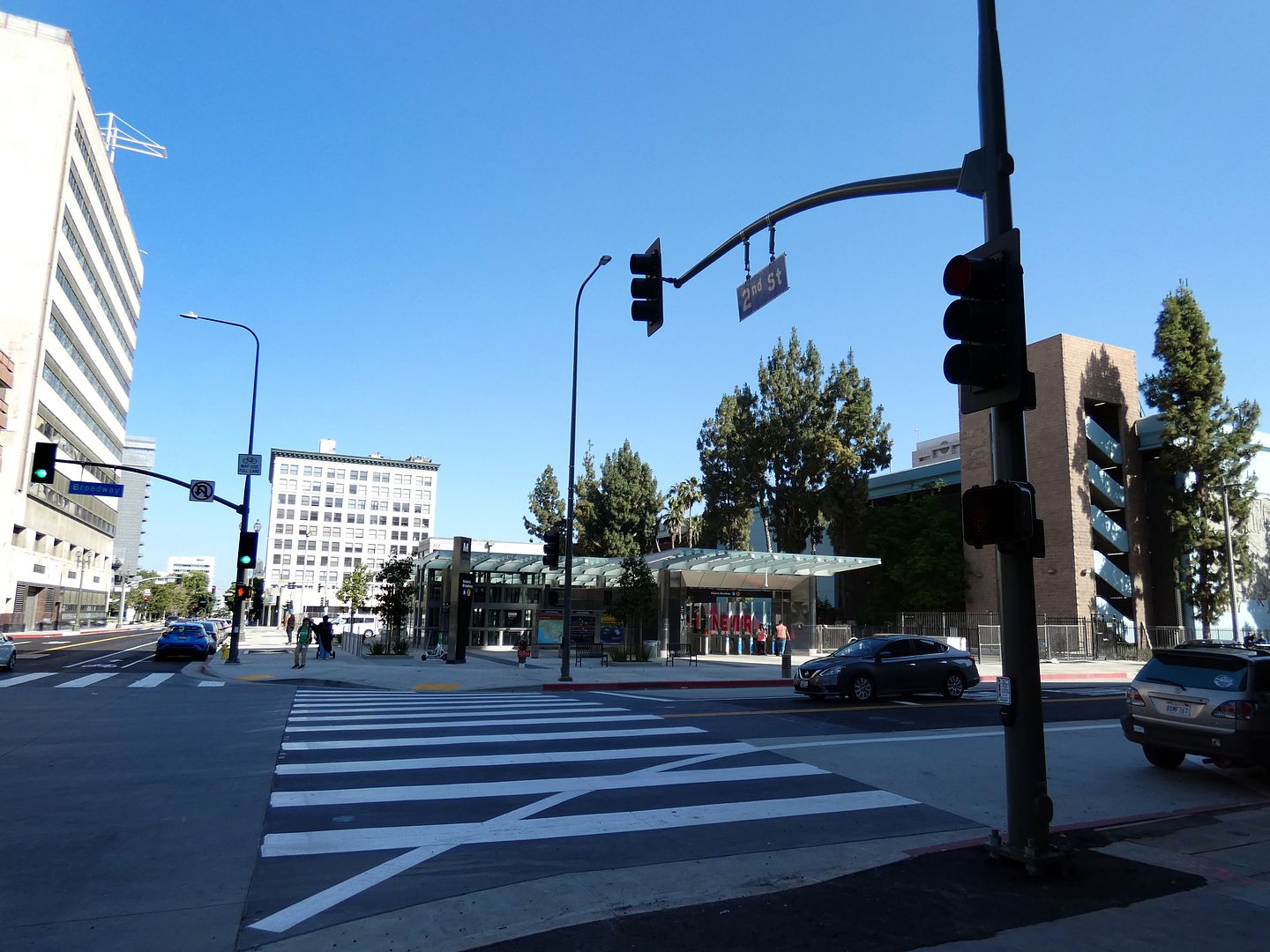
Last weekend, I trekked downtown just to check out three just-opened subway stations that comprise the Metro Regional Connector project—which allows seamless transit from Long Beach to Azusa and Santa Monica to East Los Angeles along the A and E lines.

After taking a round-trip, recreational ride on Angel's Flight, I walked over to the Historic Broadway station at Broadway and 2nd Street—where I was greeted by a couple of friendly workers who made sure I knew the fare was free that day as part of the grand opening.

The entrance plaza to the Historic Broadway station features window art by Andrea Bowers...
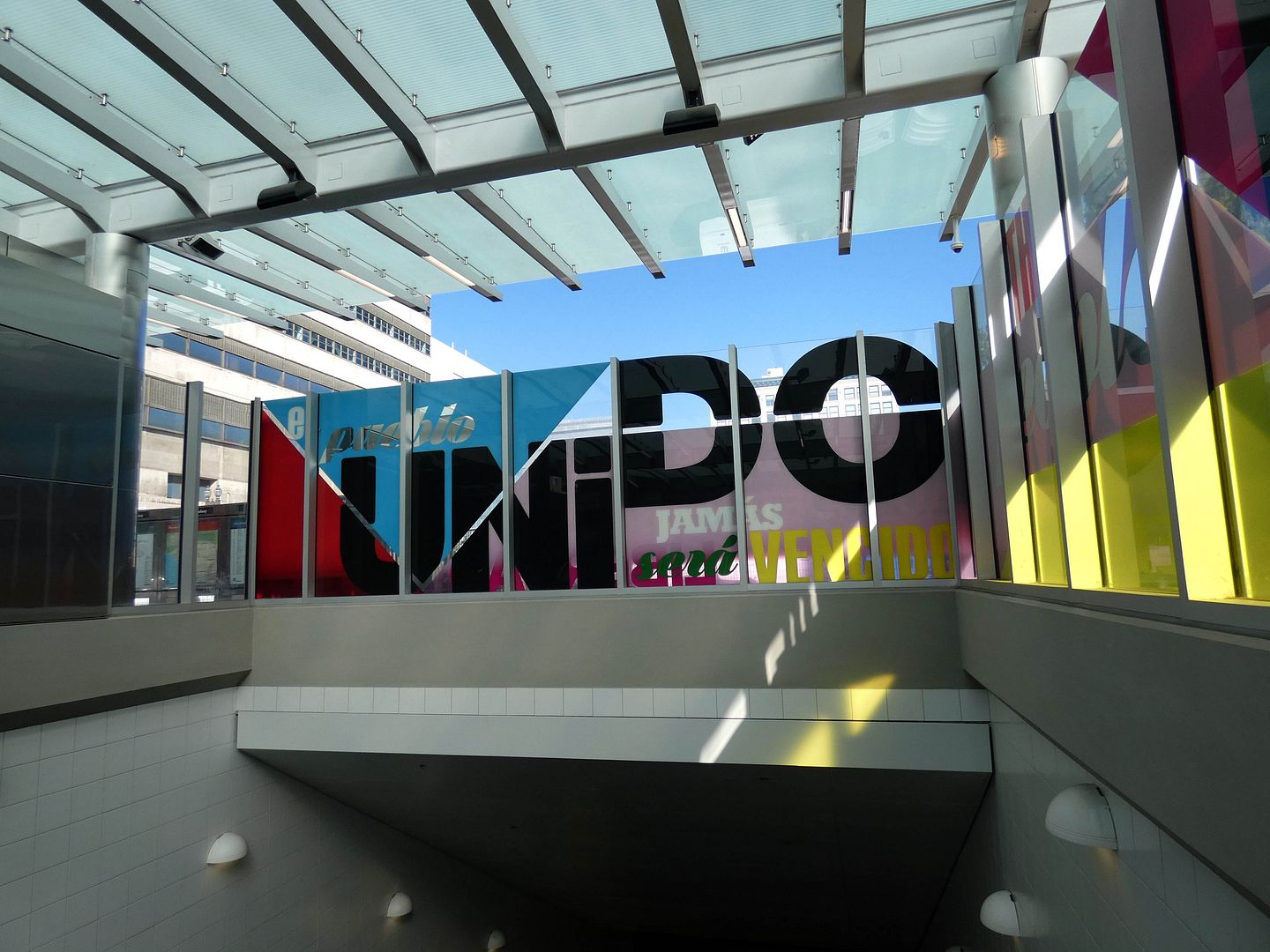
...in a piece titled "The People United," which seeks to reflect the diverse communities that regularly gather downtown to express their voices and their rights, according to the artist statement.
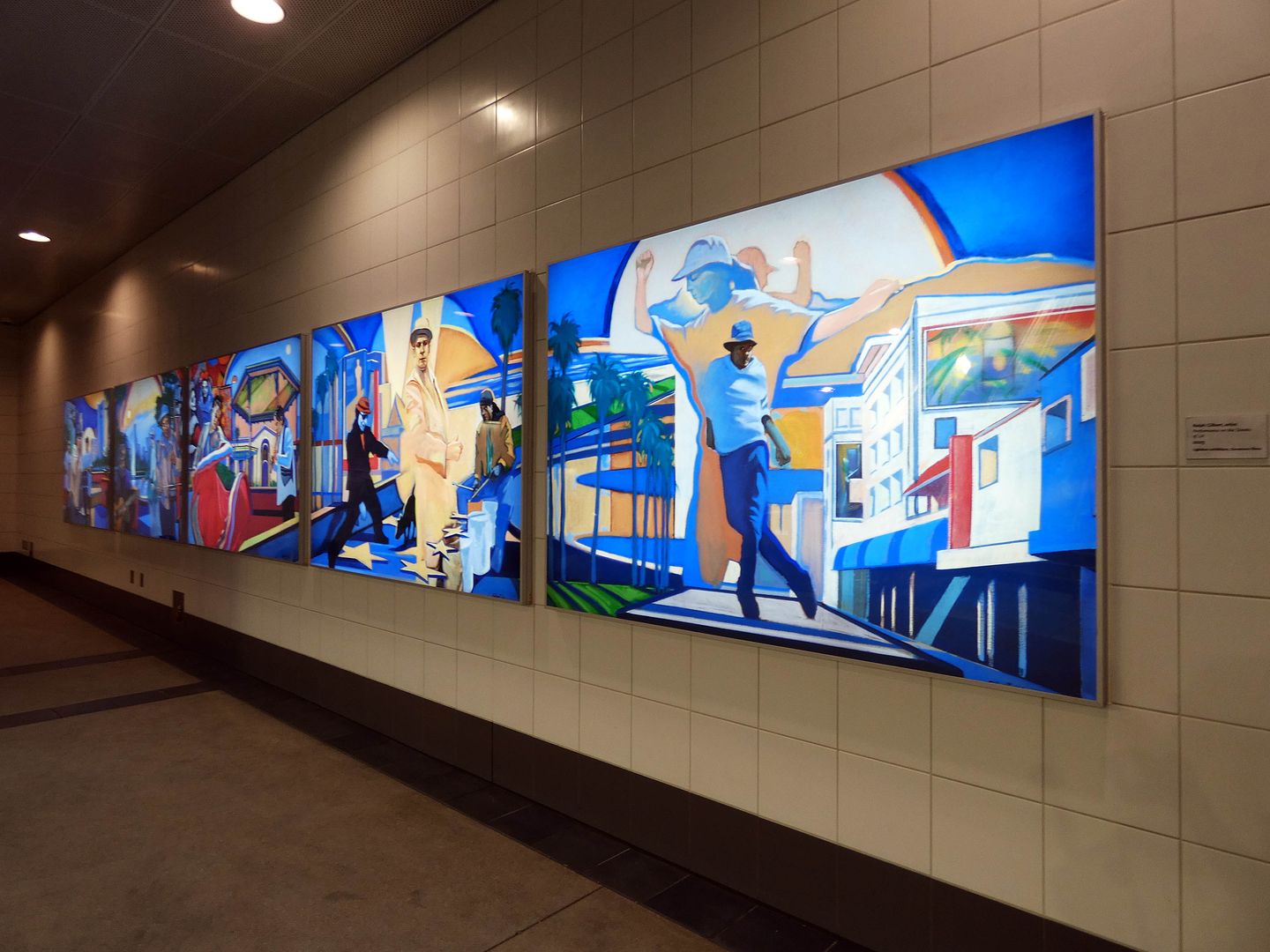
Each of the stations also feature a rotating exhibit of lightbox art—including "Performance on the Streets of LA" by Ralph Gilbert, who pays tribute to all sorts of sidewalk entertainers and other buskers who
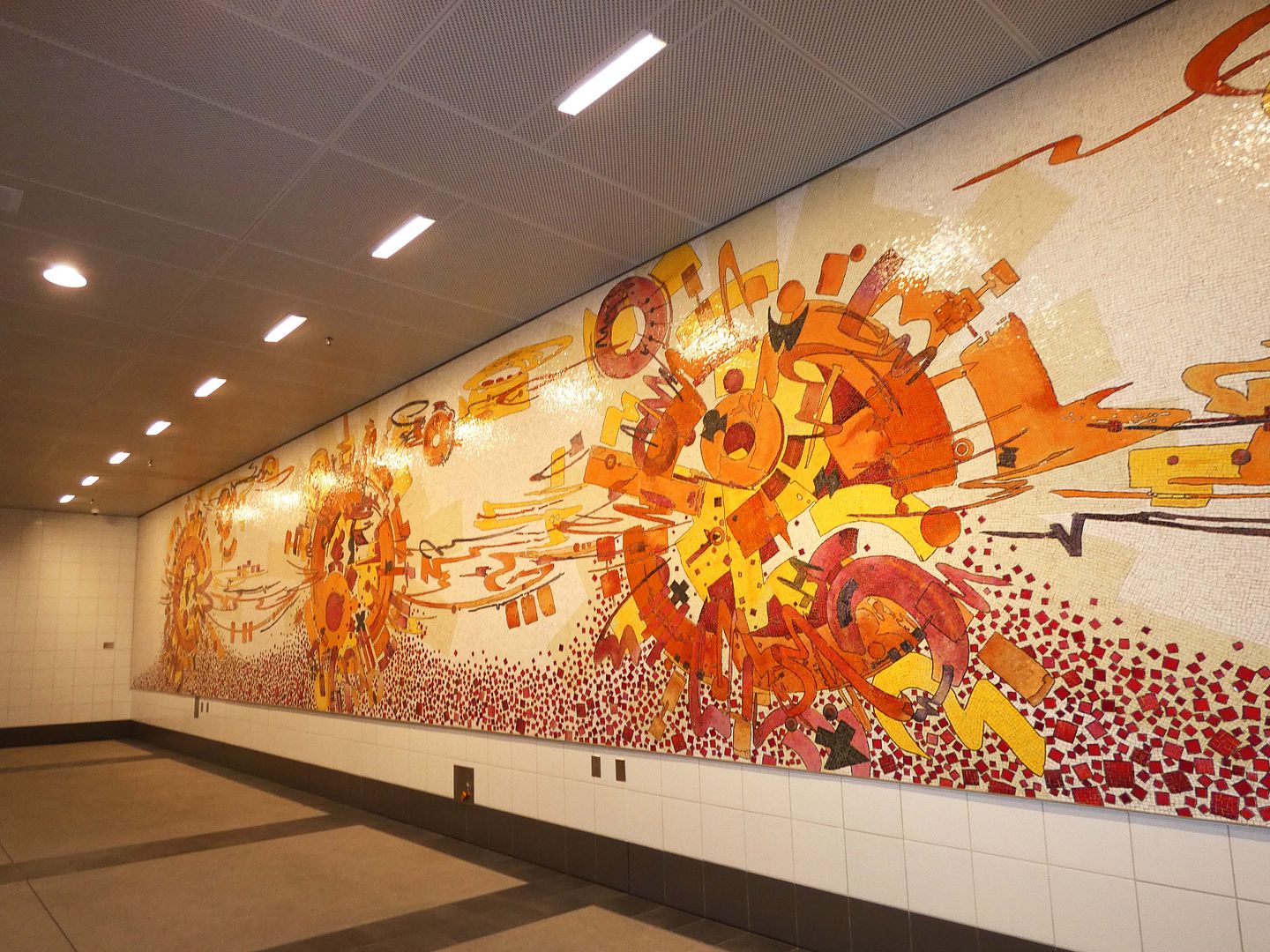
And another permanent art installation at the Historic Broadway station is an abstract mosaic tile piece, "Red Car Requiem," by Mark Steven Greenfield.
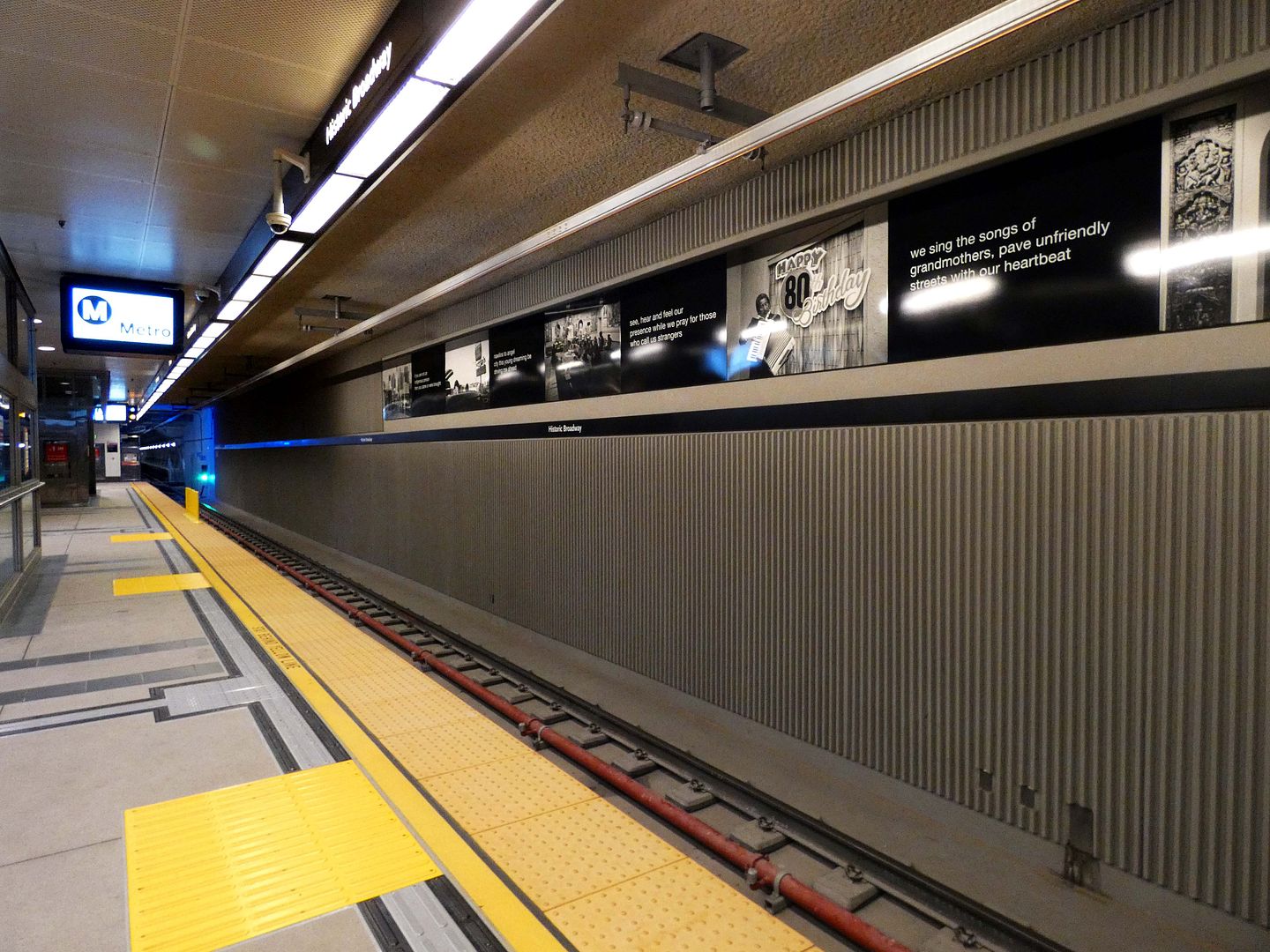
On each side of the platform is the photo series "Migrations" by Clarence Williams, which depicts those who fled Louisiana in the wake of Hurricane Katrina (2005) to make Los Angeles their new home.

I was more fascinated by the new, blue-lit tunnels, all sharp and round...
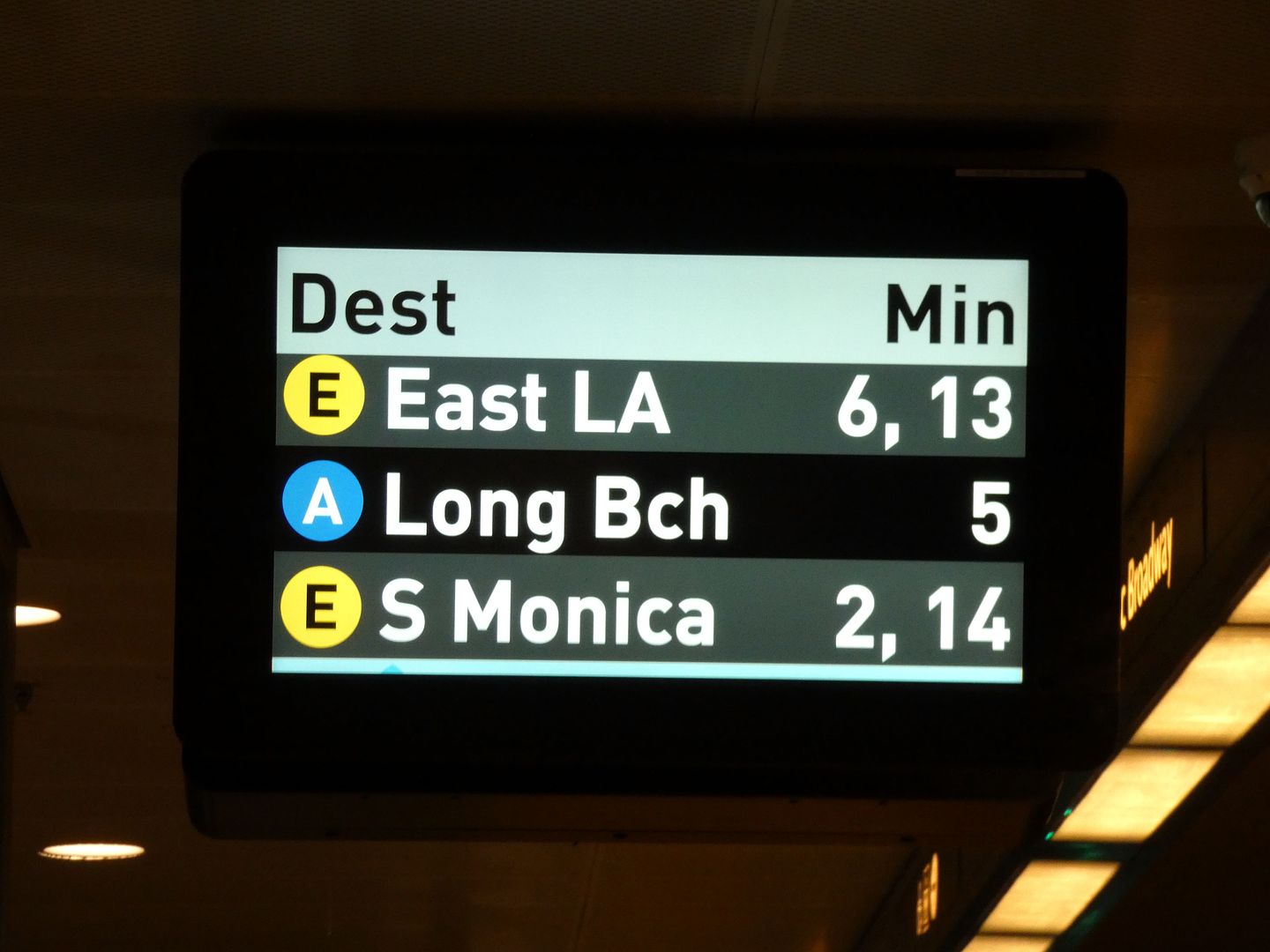
...the electronic status boards, which helped provide me a sense of time but not a sense of place...
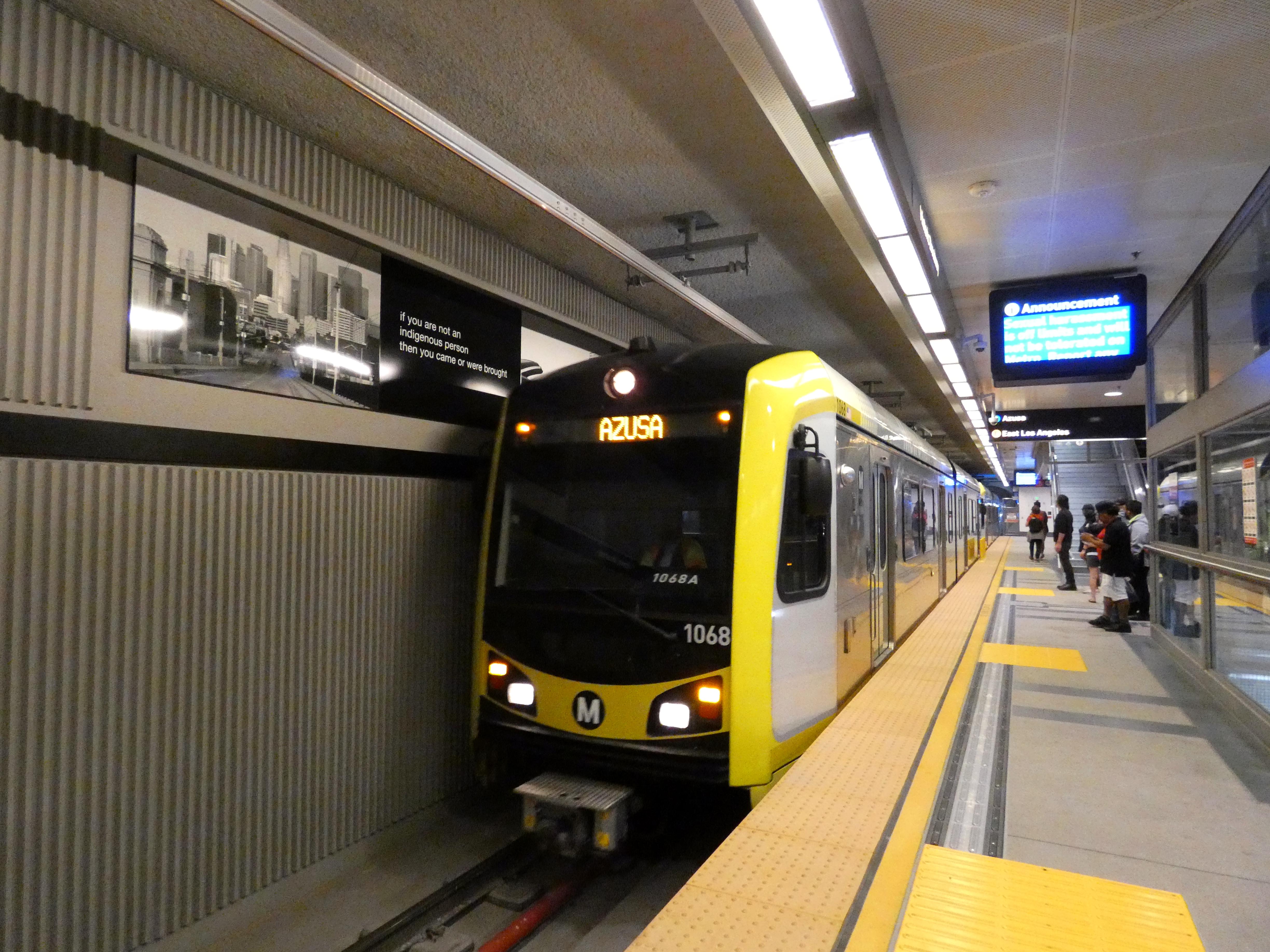
...and the trains themselves, arriving in a whoosh to the stations with a bing-bong and the thud of doors opening and closing.

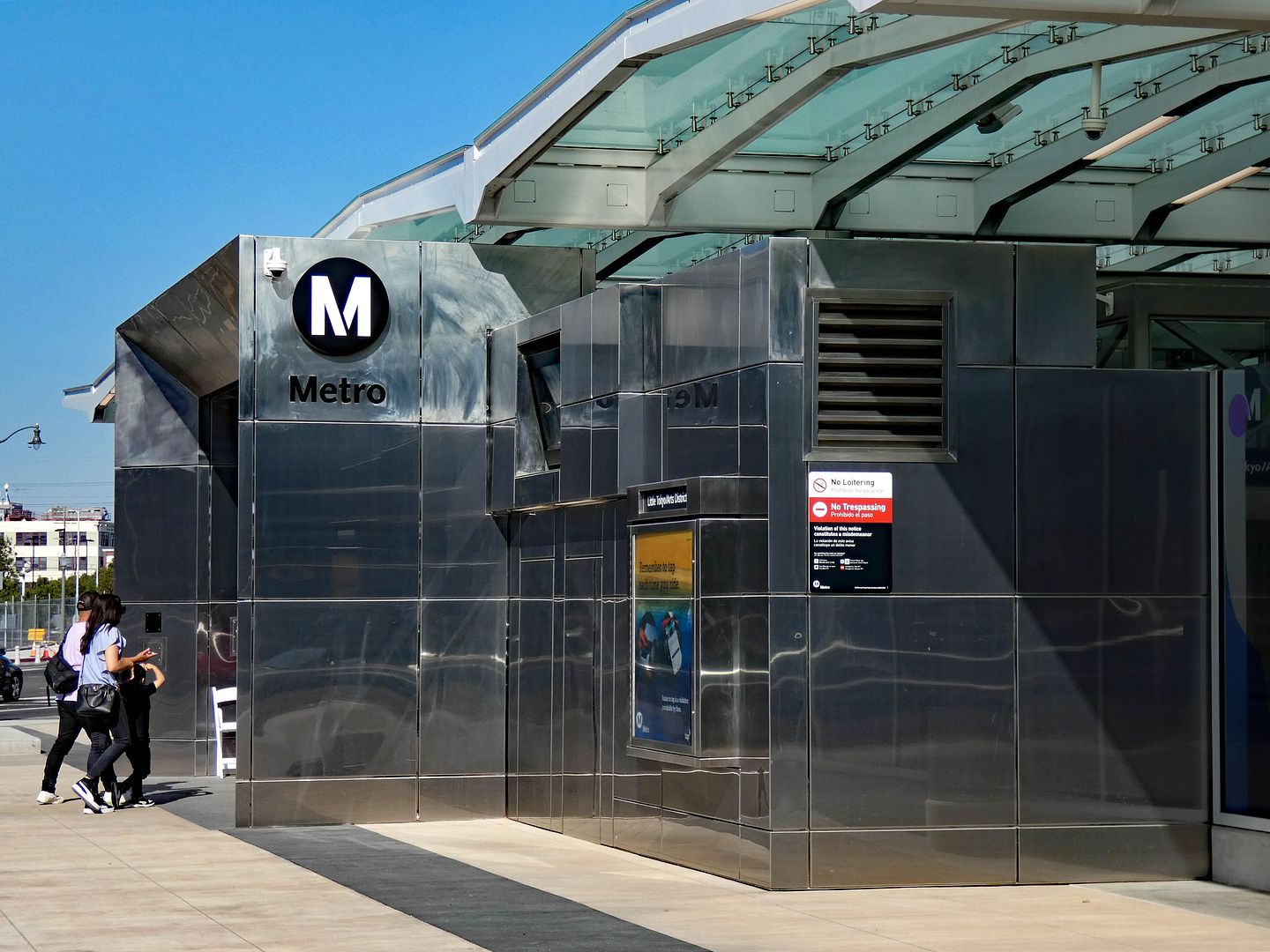
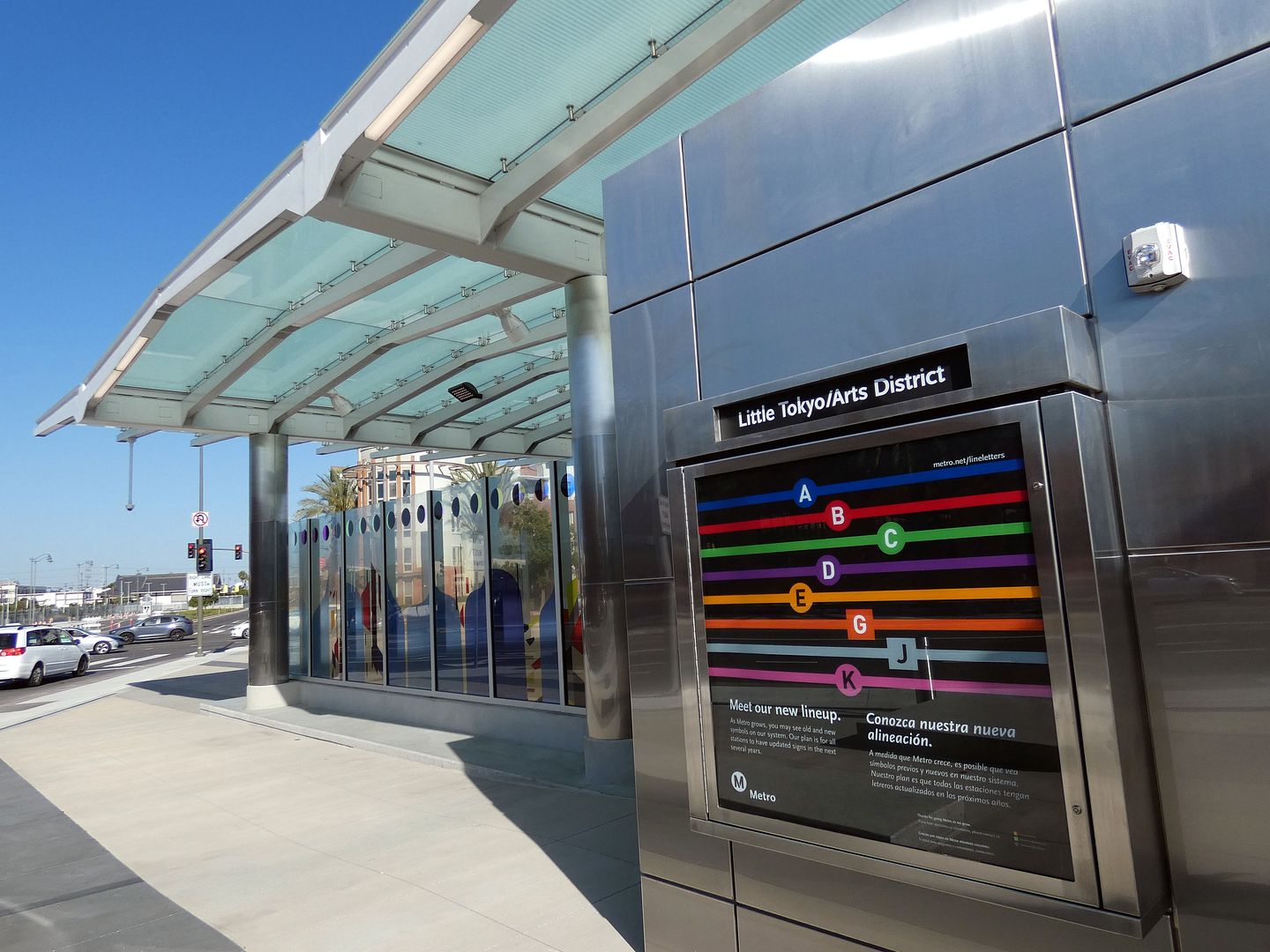


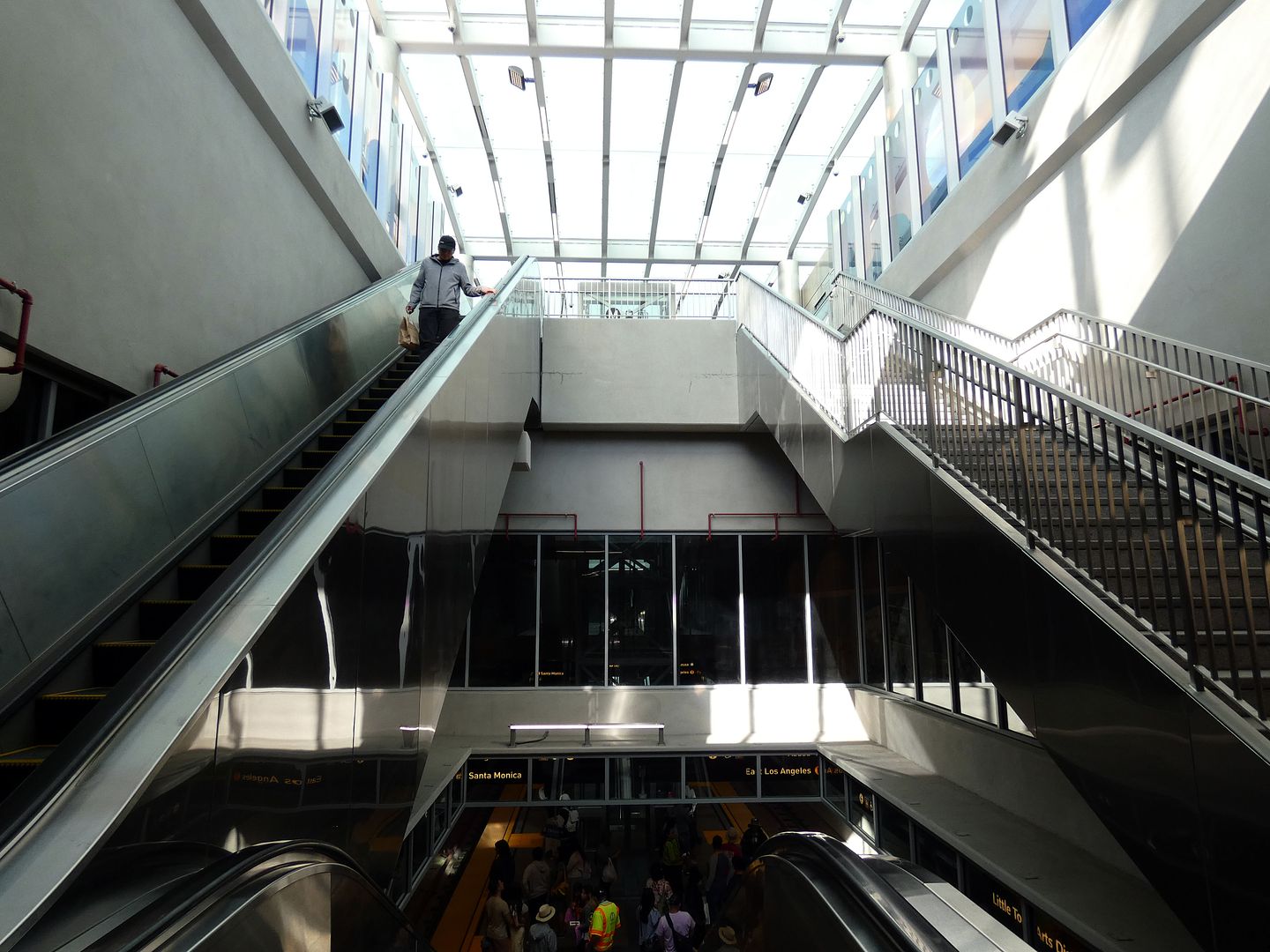


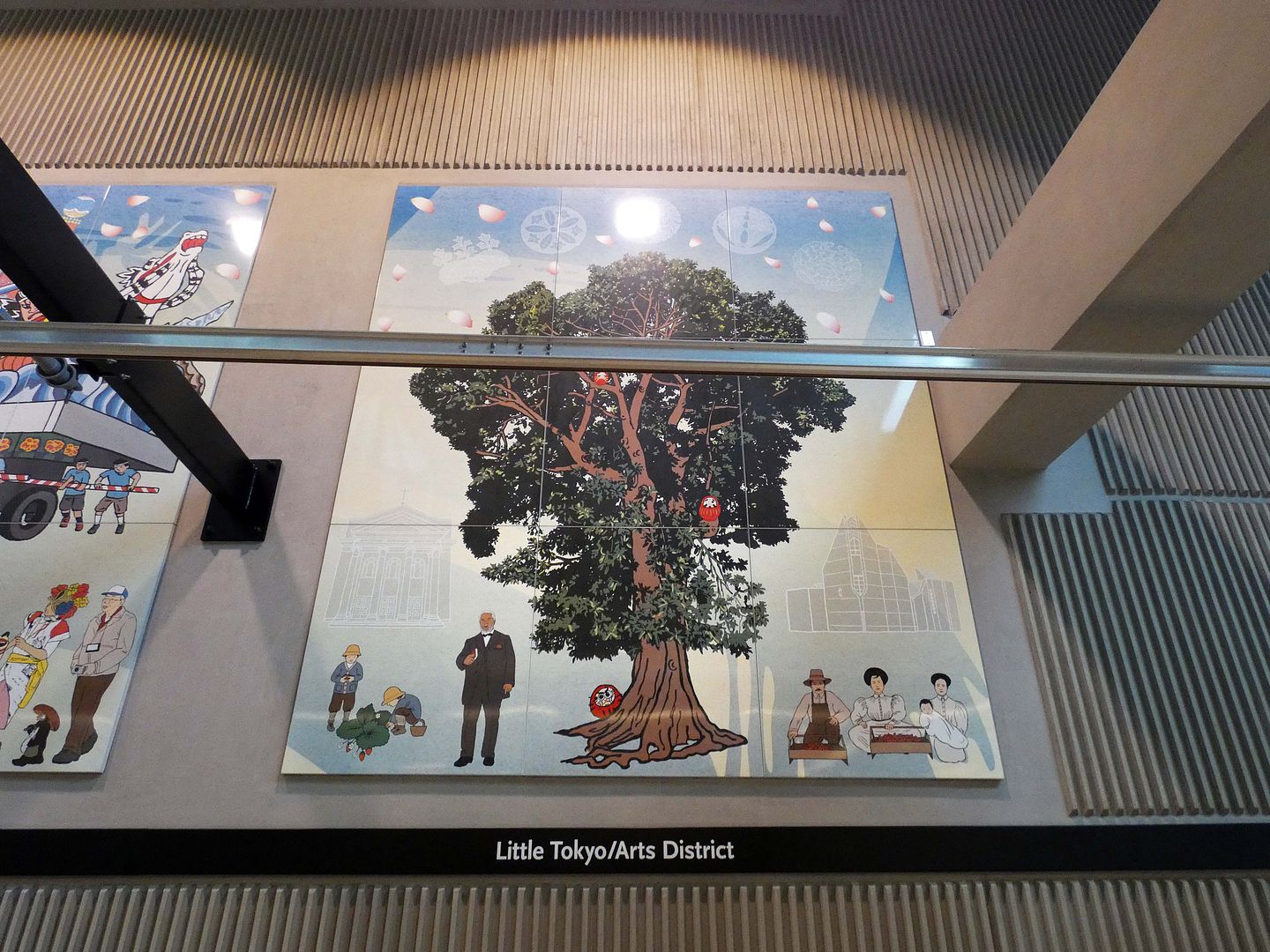
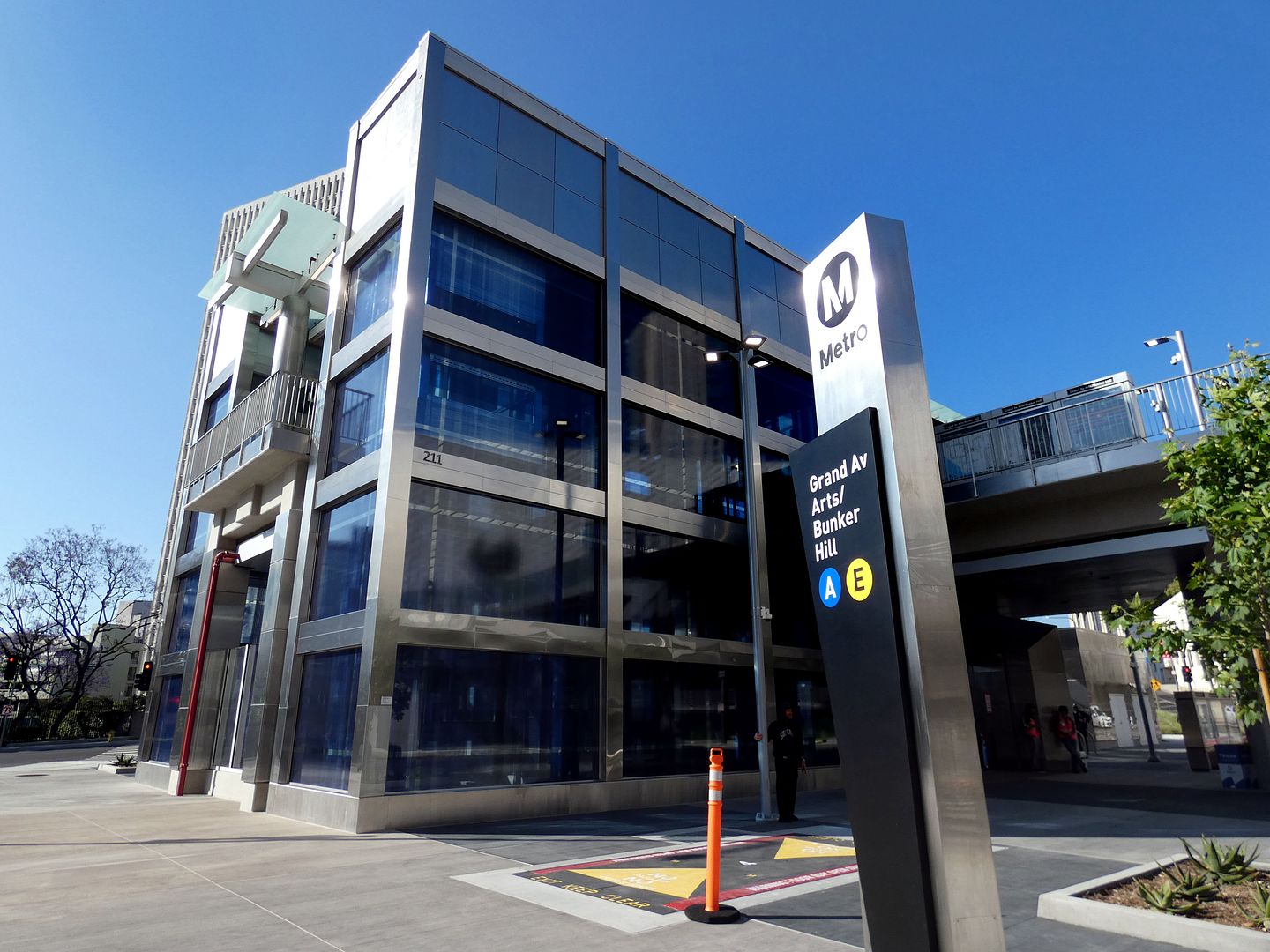

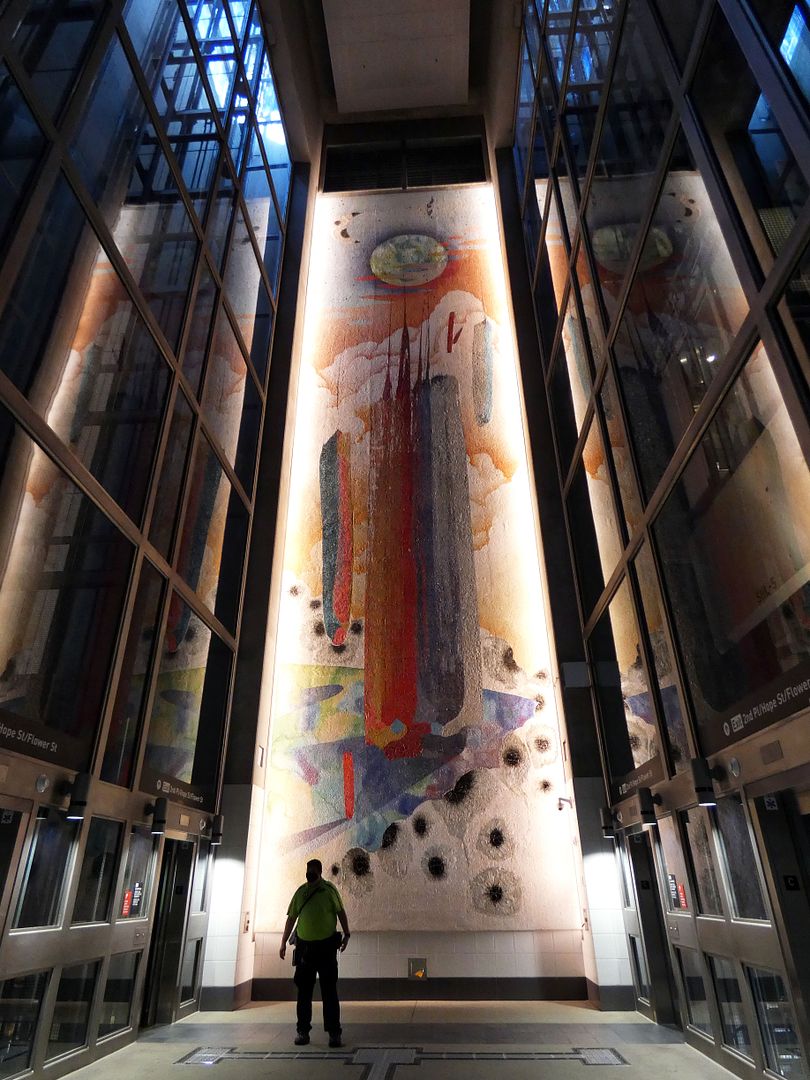
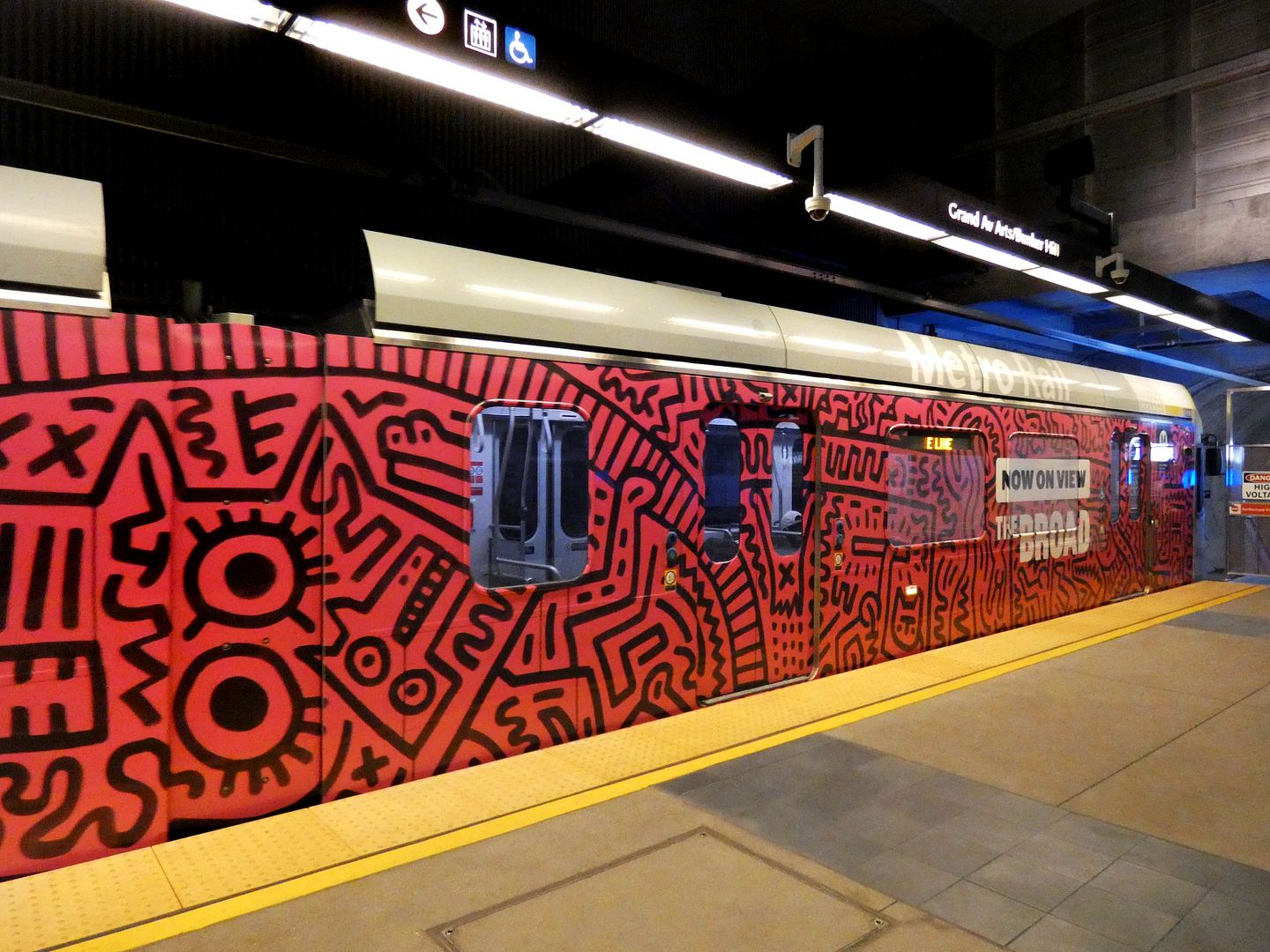

I took the train one stop east to Little Tokyo, whose station is completely relocated from the former above-ground trolley stop on the now-defunct Gold Line a couple of streets over.

This entrance plaza is now more centrally located, directly across from the Japanese American National Museum...

...right near the border of the Arts District.

The translucent window artwork "Harmony" by Clare Rojas evokes land, water, and sky...

...even as you sink into the underground on a short escalator ride...

...the sunlight still beaming in, all the way down to the train platform.

Everyone seemed happy to be there. These stations didn't feel as dismal as, say, the NYC subway system can be.

The platform art at the Little Tokyo station is Audrey Chan's "Will Power Allegory"...

...a series of panels that feature illustrated vignettes depicting different aspects of Angeleno life.

My final stop actually involved me backtracking and heading back west, through the Historic Broadway stop I'd already explored, and onto the Grand Av Arts/Bunker Hill station.

It seemed strange to have a subway station named after a hill that was pretty much obliterated in the 1960s. Do non-historians under a certain age even know what Bunker Hill is (or was)? Regardless, most people will know Grand Avenue as the location of The Music Center (including Walt Disney Hall), The Broad, and MOCA.

The new subway station itself is a destination for art lovers, too, with its "High Prismatic" monumental painting by Pearl C. Hsiung, which conveys the ever-changing present and future.

And that seems perfect for our ever-changing public transportation system.
Related Posts:The Gold Line is dead. Long live the Gold Line. https://t.co/ZhvSYO4A3D pic.twitter.com/ncBM1rXeRv
— Nick Andert (@NickAndert) June 16, 2023

No comments:
Post a Comment